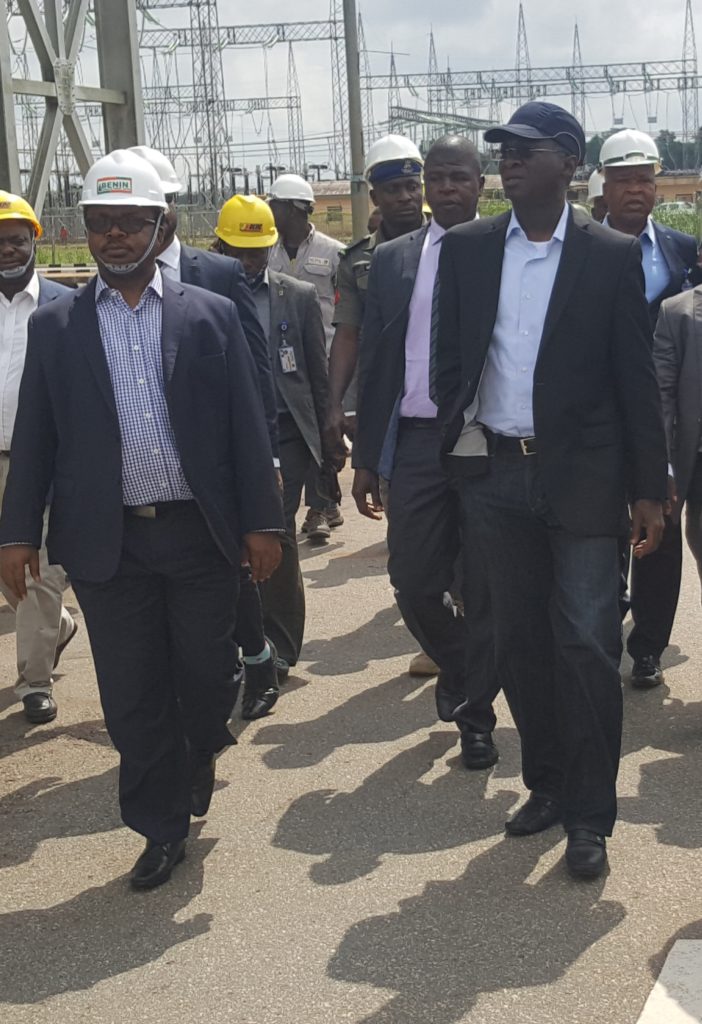
It is a public knowledge that epileptic power supply hurts the economy
of any nation. Nigeria was once unfortunately named to occupy the 70th
spot on the global electricity production chart by the CIA World Fact
book. In this report, OLATUNDE DODONDAWA examines the intervention of Niger Delta Power Holding Company (NDPHC) in tackling power sector
challenges in 2018.
Introduction
Despite the fact that Nigeria is not lacking in electricity sources as
it has abundant hydro, thermal, solar and wind electricity sources to
generate adequate power supply; the challenges of adequate power
supply provision for its teeming population seem insurmountable.
Experts have argued that the major problems have been the lack of the
right political will to do the needful coupled with an abysmal record
of improper management of public power bodies.
The first 132KV line in Nigeria was built in 1962, to link Ijora power
station in Lagos to Ibadan power station. As the years went on, there
were no commensurate deliberate activities on a major scale yearly to
continually boost electricity supply infrastructure to a fast growing
population. Even when some efforts were made, they were largely
lethargic and not holistic until the return of constitutional rule in
1999 and the setting up of the National Independent Power Project
(NIPP) in 2005.
Through the National Electric Power Authority (NEPA) and Power Holding
Company of Nigeria (PHCN) era, epileptic power supply was the norm and
the expectation for stable power supply in the country was continually
dashed. Hydro-electric dams went into decay and the transmission and
distribution equipment and lines became obsolete. The coming of the
NIPP was a most patriotic plan to confront Nigeria’s huge energy
crisis and to end it. The National Council of State (NCS) and the
National Assembly approved an initial funding of $2.5billion for the
NIPP from the Excess Crude Oil Account.
NDPHC intervention.
The Niger Delta Power Holding Company Limited (NDPHC) was incorporated as a limited liability company to serve as the legal vehicle to hold the NIPP assets. In 2008, the National Economic Council (NEC) voted
$5.375billion from the excess crude account as Power Emergency Fund
(PEF) to complete the NIPP. NEC also inaugurated the NIPP Steering
Council in January 2009, chaired by Dr. Goodluck Jonathan, then the
country’s vice president with six state governors and four ministers
as members. The NIPP Steering Council, which has transformed as the
board of directors of NDPHC is headed by Vice President of Nigeria. In
February 2009, the council approved phase-1 budget of $2.213billion
from the PEF of $5.375 billion to complete the first phase of the NIPP
projects.
It also approved $423.639 million to PHCN as special intervention
fund. In June 2010, the council approved $123.110 million to augment
the phase 1 budget and N1.750 billion to buy NDPHC corporate
headquarters in Abuja. The NDPHC, a child of necessity and baby of the
three arms of Nigeria’s government, went on to build several world
standard gas turbine plants, distribution and transmission equipment
and lines across Nigeria. Under the NIPP, more power stations have
been built in Nigeria for the first time since the country’s
independence. These plants have added more megawatts (MW) to the
national output.
However, the journey of the NIPP became longer than expected but then
it has become a pillar institution in Nigeria’s power sector
stability. It has completed eight power plants with combined capacity
of 3772 MW. They include: 750MW Olorunsogo II, 450MW Sapele, 434MW
Geregu II, 450MW Omotosho II, 450MW Ihovbor, 450MW Alaoji, 563MW
Calabar and 225MW Gbarain.
The NDPHC has also completed 2,194km of 330KV transmission lines and
809km of 132KV transmission lines; an increase of 46 per cent and 13
per cent respectively over the pre-NIPP status of grid infrastructure.
It has further constructed a total of 2,600km of 11kv and 1,700km of
33kv distribution lines for improving access to electricity. It is
trite that there is heavy dependence on the NIPP plants in bringing
electricity supply to Nigerians. In grid instability, NIPP plants
provide about 265MW of Spinning Reserves to facilitate grid
responsiveness during disturbances on the transmission network.
Spinning reserve is practiced all over the world.
The NDPHC assets are the backbone of Nigeria’s power infrastructure.
A transparent privatization process for credible international
investors will push the NIPP across the finishing line.
Nigeria’s power generation capacity has risen. So also has been a huge
exponential growth in population and the demand for electricity
supply. Merging these two has not been easy. But Nigeria’s power
distribution system has been enhanced with hundreds of injection
sub-stations, 11KV lines and 33KV lines added. Work is also in
progress in many more transmission and distribution projects. The
massive construction of these power projects by the NDPHC has
prevented the total collapse of electricity supply in Nigeria.
Although a 100 percent supply is yet to be attained, things have been
stabilised while work on incremental power supply is ongoing.
Some other challenges that the NIPP has had to grapple with include
security and community issues; right-of-way challenges for
distribution equipment and transmission lines; port clearing
coordination hitches and contractor performance-related problems. Even
though the three tiers of government own the NIPP, equipment imported
for the power projects are often delayed or seized at the ports by the
Nigeria Customs Service (NCS) because of non-payment of import tariffs
thereby stalling the execution of some power projects.
To fast track the attainment of stable electricity for Nigerians, the
federal Government should seriously consider waving duties on
equipment for power projects. It needs to seriously educate
contractors on their patriotic duty to deliver and on time. There is
need for a special para-military unit to ruthlessly tackle the
activities of vandals, and address the kidnap of the employees of the
contractors.




